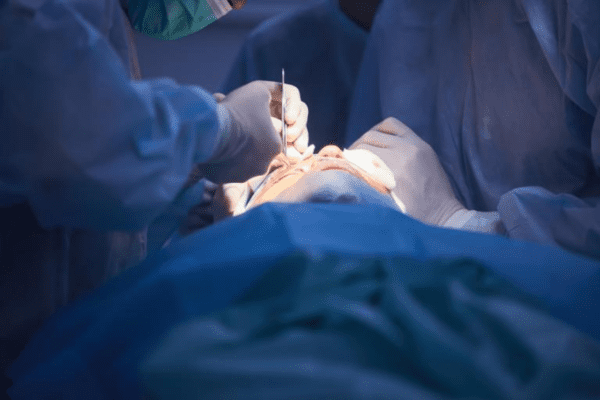Although everyone is flawed by nature, if worries about your appearance cause you to feel self-conscious and miserable, plastic surgery might be the solution. Continue reading if you want to learn more about plastic surgery, its benefits, and drawbacks, or if you are considering getting plastic surgery but are concerned about facelift scars in front of ears.
Facelift
A facelift operation, a meloplasty or rhytidectomy, tightens and removes drooping skin from the face and neck by tightening the facial muscles using surgery to increase tone. The procedure may also include the removal or repositioning of extra fat.
Although elderly patients can also get facelifts, those between the ages of 40 and 65 receive them most often.
There are different types of facelifts, and your consulting physician will select the most suitable one for you.
What causes facial aging?
Each patient ages differently and at a different rate. Smoking, sun damage, significant weight changes, and other external factors can all hasten age, but heredity has the most prominent influence. Usually, the deterioration of the eyes, brow, face, and neck occurs at roughly the same time as the face ages.
Occasionally, one location may take the lead and be treated with a specific method. In many ways, how people age is subjective, and the patient’s perspective is the only one that matters.
What does a facelift fix?


With age, the face’s appearance and shape change. Skin loses its elasticity and loses its ability to snap back readily. In some parts of the face, fat deposits are on the decline while they are on the rise.
These aging-related alterations can be treated with a facelift:
- A sagging cheek look
- Skin that is too thick at the lower jawline
- Deep skin folds from the corners of the lips to the sides of the nose.
- Skin that is sagging and extra fat in the neck (if the procedure includes a neck lift)
What does a facelift not fix?
Fine wrinkles, sun damage, lines around the nose and upper lip, and uneven skin tone cannot be treated with a facelift.
Side effects of a facelift surgery
For facelift patients, some unpleasant experiences are expected side effects rather than difficulties. Swelling and bruising are the most typical. Every patient experiences some degree of bruising and swelling, which takes several weeks to go away.
Most patients can return to work and active social life in around two weeks with the right makeup. However, at approximately six months, patients typically look their best.
- Post-operative emotional depression
This is a typical side effect of major surgery and only lasts around two weeks after the procedure. Most of the time, no medication is required, especially if the patient knows that depression is a typical physiologic response. Usually, there is some dynamic overshoot and a brief exhilaration as the patients come out of this sadness.
- Numbness in cheek and scalp
Itching or other strange sensations are frequently felt as the nerves repopulate the anesthetized areas. The patient usually has no issues with this. However, occasionally someone could find some of these feelings very unpleasant. Although it is irritating, it usually goes away after a few months. Medicine might be necessary.
- Scar maturation
In time, the surgical scars that develop should be barely noticeable. However, before they become flat, slender, and white, all scars undergo maturation. For facelifts, the incision locations are carefully chosen so they can be covered up until their visibility is no longer embarrassing. Occasionally, a scar that is overly thick or wide can develop. Then, a revision is required.
- Hair loss
There have been reports of hair loss along the scalp incisions. The healthy blood flow most likely causes this to the hair follicles and the lack of tension on the closures of the scalp. The composite approach has not had this issue.
- Swelling
You may also experience swelling if you sleep on your side. Therefore, your consulting physician may recommend you sleep on your back after a facelift. You may also wear a head wrap to reduce swelling.
Facelift scars in front of ears
The facelift scars are located in different places on the face, and their healing time varies. Even though facelift scars heal reasonably well, they don’t always look ideal immediately.
For a full facelift, scars are both in the front and the back of the ear, joining around the earlobe. When positioned correctly, they become barely noticeable. The scar will look good reasonably quickly in front of the ear, but it will take a little longer if it is behind the ear.
How to cover facelift scars in front of ears?
I advise wearing an ear-covering style for three to four weeks to a month if you have long hair, whether you’re a man or a woman. The scar should be well-appearing and tough to discern by then.
Once the scar has healed after a facelift, it cannot be easy to discern any evidence of the procedure.
When can I return in public after a facelift?
Patients are informed that after two weeks, most of the swelling and bruising will have diminished to the point where it will be difficult to tell that they underwent surgery. The following day, patients can resume their normal activities. The patients can be active (with limitations) after surgery. Unfortunately, most of us would feel self-conscious about our appearance following a facelift.
However, there are ongoing alterations even months after an operation. It takes up to that long for the swelling to go down entirely. After a facelift, facial feeling gradually returns over several weeks. This extended period of healing includes skin softening and incision flattening.
Conclusion
Your face and neck may look younger after a facelift. But the effects of a facelift fade over time. The skin on the face may start to sag once more as we age. A facelift should last ten years or longer if you take proper care of yourself.
The associated risks with facelifts are minimal. The facelift scars in front of ears generally heal well. You can cover the scars with makeup during their healing period or style your hair accordingly.









